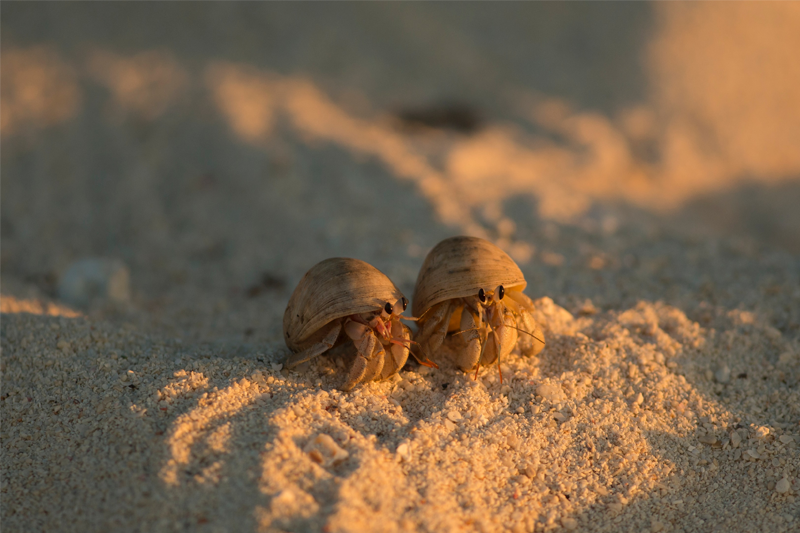1. Shells are essential
Hermit crabs are soft-bodied creatures; hence, they require shells. In the wild, they used anything to shelter to, be it used snail shells or even coconut shells. They rely heavily on shells for protection since they are highly vulnerable species without it.
2. The are described as having ‘Identity crisis’
Technically, Hermit Crabs are not true crabs since they are closely related to squat lobsters, which are in fact not true lobsters themselves. Squat lobsters, in case you didn’t know, looked like hermit crabs, but they have longer claws.
3. Built to survive
Hermit crabs are omnivores, which means they will survive through consuming meat or vegetables. They will even go further by scavenging for whatever food source is available in their area, which means even dead animals are on their menu as well.
4. Free Occupancy for Sea Anemones
Most of the hermit crabs encourage sea anemones to ‘occupy’ their shells, and these anemones even transfer from the hermit crab’s old shell to its new shell when they move. So what’s the catch here? Sea anemones act as an extra layer of protection for hermit crabs since its tentacles sting possible predators of the hermit crabs. Interesting, isn’t it?
5. Unique-Handed Crabs
Hermit crabs are mostly ‘right-handed’ which means that in most cases, their right claws are always larger compared to the left.
6. Growing Backwards
When hermit crabs can’t find large shells and only small ones are available in their area, they have this unique ability to decrease their size while they are in their molting phase.
